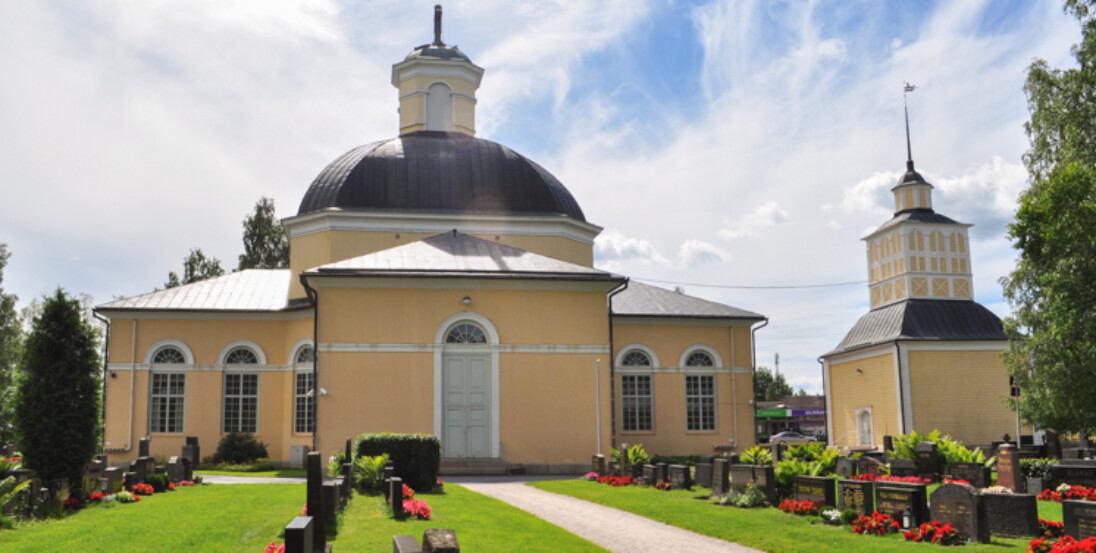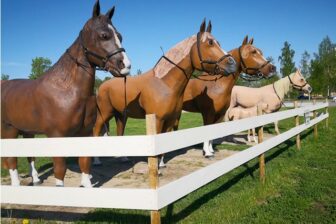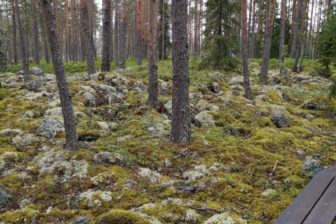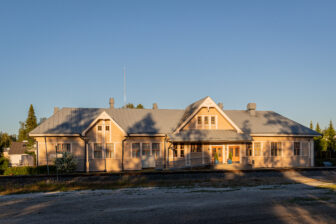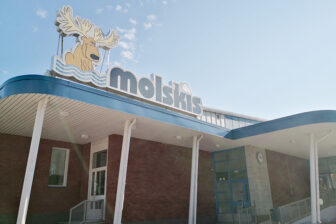The completion date of Kurikka Church can be seen on the inscription on its ceiling: ‘This house of worship was built during the rule of Tsar Nicholas I in 1847. Erik from Kuorikoski.’ The church was built by the well-known church builder Erik Kuorikoski on the basis of drawings approved by architect Carl Ludwig Engel. The church was renovated inside and out in 1987–1990, when it was painted using the original colours. The church now seats about 900 people.
Built on a thick layer of clay, the church has a floating foundation, with the stone foundation built on horizontal wooden beams placed below the groundwater. The walls are made of burnt bricks and the roof is made of wood.
Painted by the Stockholm-based painter Johan Sacarius Blacstadius in 1857, the altarpiece of Kurikka Church consists of two sections: one part depicts the crucifixion of Jesus and the other part has the Last Supper as its subject. The northern part of the church is adorned by the altarpiece of an earlier church by an unknown painter. The pulpit, chandeliers and sconces also originate from the older church that used to be located on the same spot. The church lobby has a christening board painted by Inga Pyy in 2012.
The church organ was built by the Kangasala organ factory in 1965. It has 36 stops, nine of which are located on the organ balcony as a rank of pipes.
Kurikka Church was renovated in 2011, when a room from Sunday school and wedding couples was built in the back. A disabled toilet was also added.
Bell tower
The bell tower was built in 1794. It was designed by Salomon Köhlström or Köykkä, a church builder from Jalasjärvi. The tower houses two bells, the older of which dates back to 1704. An alms box figure in the shape of a pauper boy is located in front of the bell tower. The donations are used for social work performed by the church. Today, the bell tower is used for keeping the deceased until burial.
